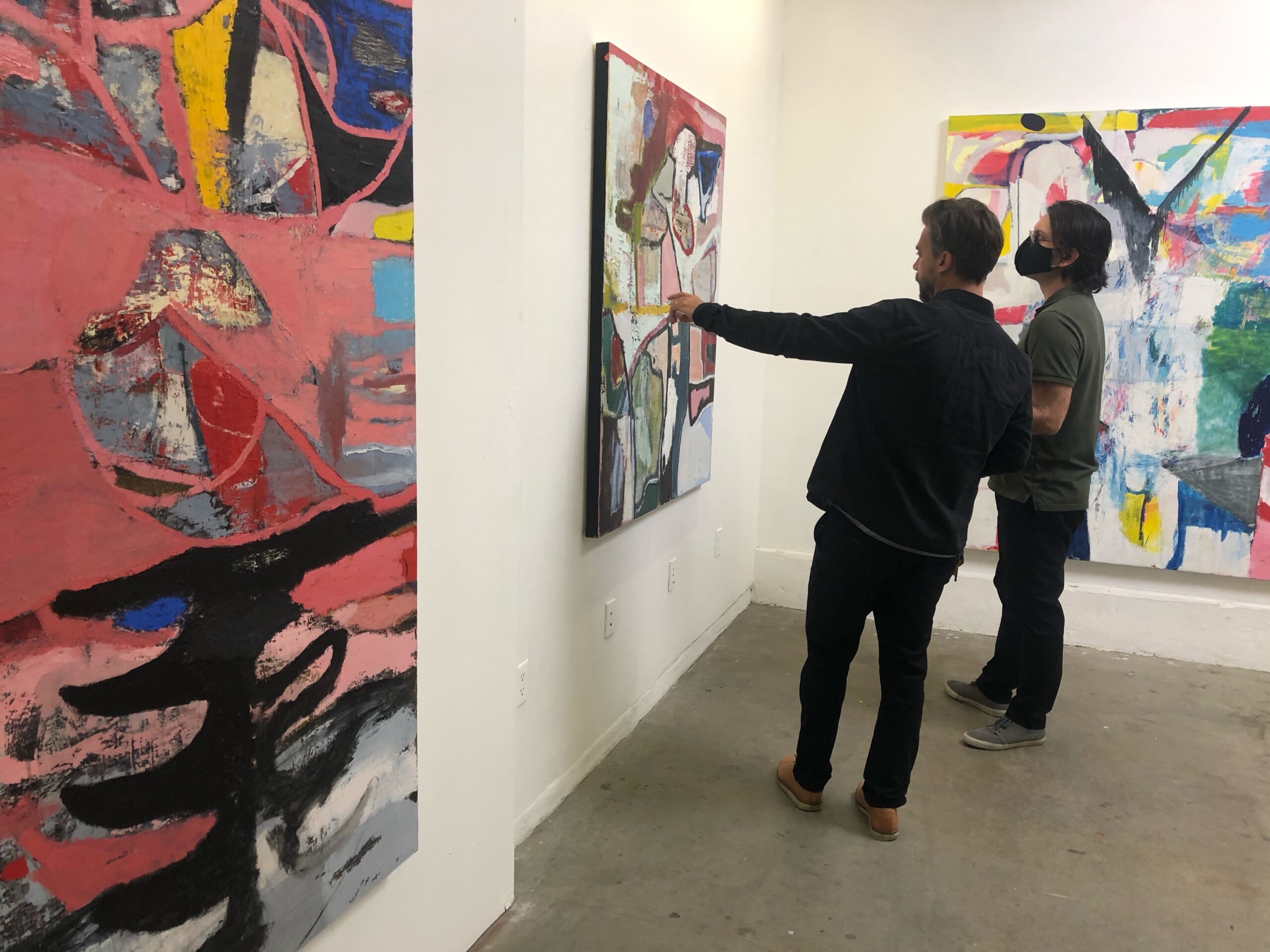
12 Apr Artist to Artist: In gallery conversation with Jordan Christian.
By Joel Woodard
Jordan Christian just wrapped up his latest solo exhibition at the F+ Gallery in Santa Ana. F+ has been in business for 9 years at the Santiago Street Art Lofts (one of the few remaining art galleries there). Situated just down the street from the Santa Ana train station, the Lofts also sit just blocks away from Logan Creative, where Jordan Christian and F+ owner Micah Kersh first met. At that time Jordan was working out of Logan Creative. These days he’s working out of his home in Long Beach where he lives with his wife and 2 year old son.
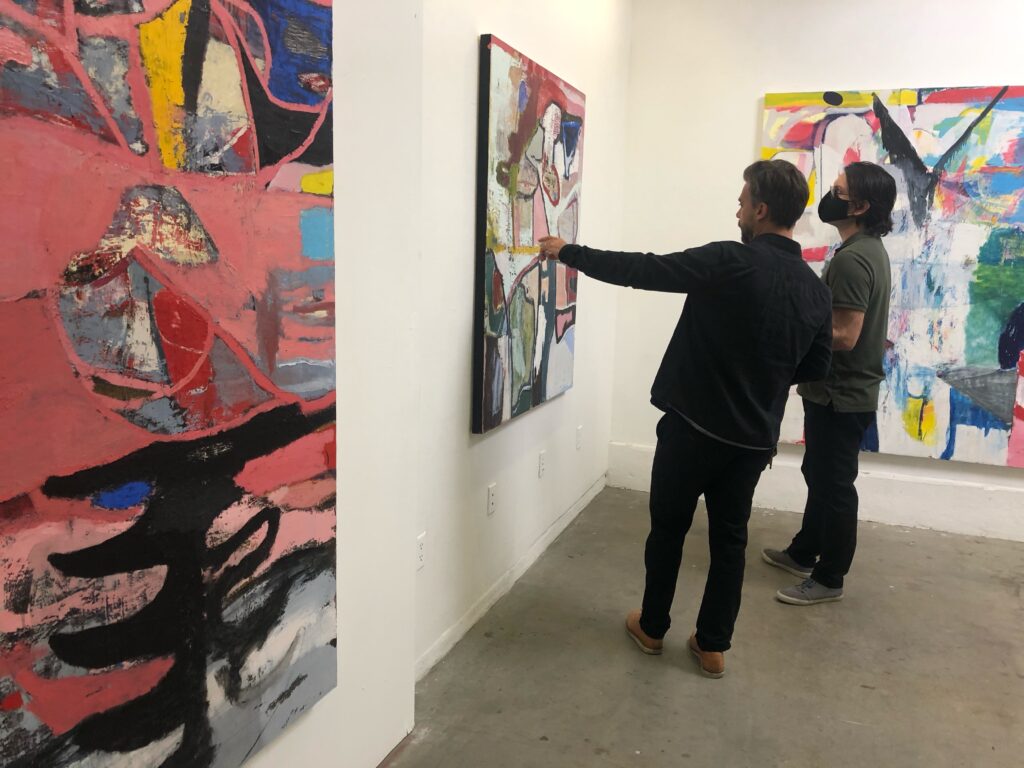
at F+ Gallery
When I first met Jordan Christian we both were enrolled in the graduate program for contemporary practices at Cal State Long Beach. After seeing his paintings in a few crits I realized that we share many artistic sensibilities and share some of the same art heroes (Gerhard Richter and Robert Motherwell among them). We’ve stayed in touch loosely since graduating, going to art shows and lectures here and there, and I was glad to come out to his show this past Saturday night on the 3rd of April, 2021. It’s really hard to believe that it was the first in-person art show I’ve been to since COVID-19 shut down the world! As I’m used to powering out day long museum and gallery trips in OC and LA, coming out to Jordans show was most welcome.
Jordan and Micah generously opened the gallery back up for me after that night so the three of us could have a private chat about the work. We were able to get into the nitty-gritty of Jordans new work, how subject matter emerges, how COVID has affected his life, and his working process in general. As an artist myself, I’m well aware of the anxieties and self-doubt seeing your work in public can bring, so I started off by asking Jordan a very simple question.
Joel Woodard: “Are you happy with the show?”
Jordan Christian: “Yeah, I think so. It represents a lot of my work over the past few years, and there are also some pieces from years further back as well. So it’s sort of a little mini survey. Several large paintings and more recent smaller paintings. It’s always special to see all the work together. Especially now since we’re on the heels, or hopefully on the heels of the pandemic. To be able to actually have a show again is pretty amazing in itself.”

at F+ Gallery
JW: “How has the pandemic affected your livelihood and your work process?”
JC: “I think probably similar to a lot of artists. In the beginning it was really tough. It was hard to muster any creative impulses, because it just felt so contrary to what was going on in the world. How dismal everything felt. So it was hard to get on board with that kind of hopeful momentum that usually happens when you’re trying to create something. Then in time, I sort of learned how to adapt that into the process and make some work that was about that in a way.”
We then started to talk about one of Jordans newer and larger pieces that is untitled.
JC: “So I think this large piece kind of embodies a large chunk of the lockdown and that time, and kind of what I was feeling and going through during that. I think you find ways to incorporate it. We’re very adaptable creatures, thankfully. It’s definitely been a strange time.”
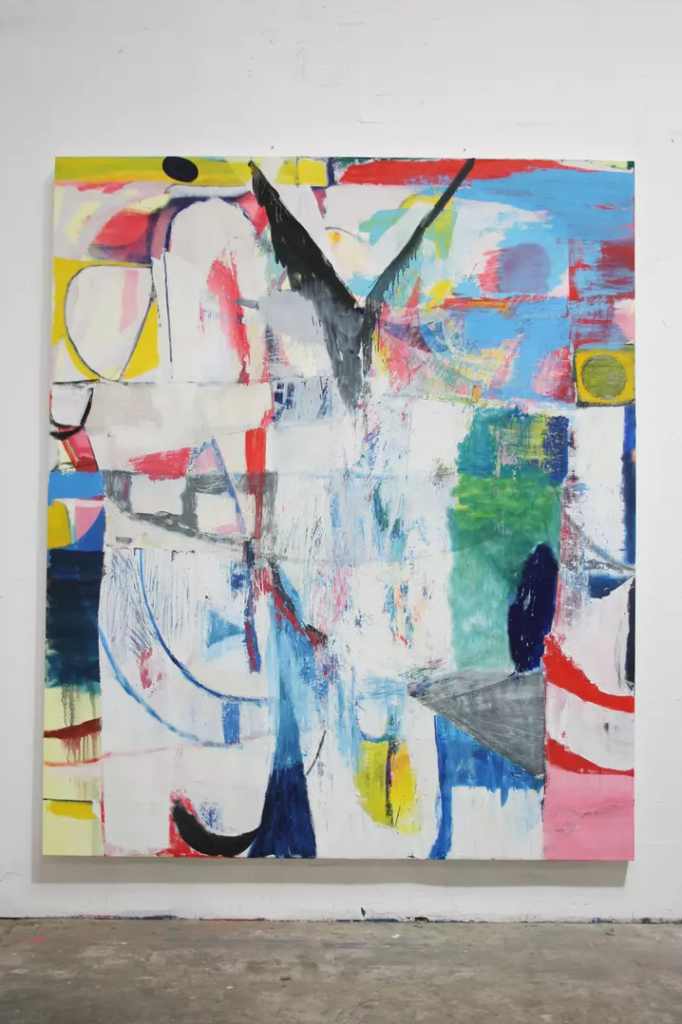
74″ X 62″ Oil on Canvas 2020
As artists, Jordan and I have the luxury of having a clear and constructive outlet to channel our thoughts and feelings into, and I know that’s served both of us well in this strange time.
JW: “Looking at this, I would say it’s different in that there doesn’t seem to be that flirting with imagery that’s present in your other work. Is that one of the differences you see with this piece and are there any other differences? “
JC: “I think it does still have some of those small figurative indications throughout. It’s more just like shapes in general, or the articulation of distinct shapes. Whereas if you look at older work like the black piece…”
Jordan pointed to an older painting titled “Producer” that goes back to 2010.
JC: “…stuff that tented to be kind of more monochrome where I was really trying to make an effort to unify things, and make things sort of an all over thing. And then as I developed, what started to come up in the work was embracing more differences, or more variety. And in turn more shapes, and even more little figurative shapes. Not overtly, but I guess more shapes in general. But in terms of how maybe this one is different, I think ironically, for being a painting that maybe represents the period of 2020, it is a pretty high key, somewhat optimistically colored painting.”
Those high value, almost pastel type of colors are clearly visible. The yellow that you can see in most of Jordans work isn’t as buried in this piece as it is in others. It’s easy to see how the overall high key value of this painting stands out as optimistic to his other paintings, and this painting is also not as heavily worked as the others.
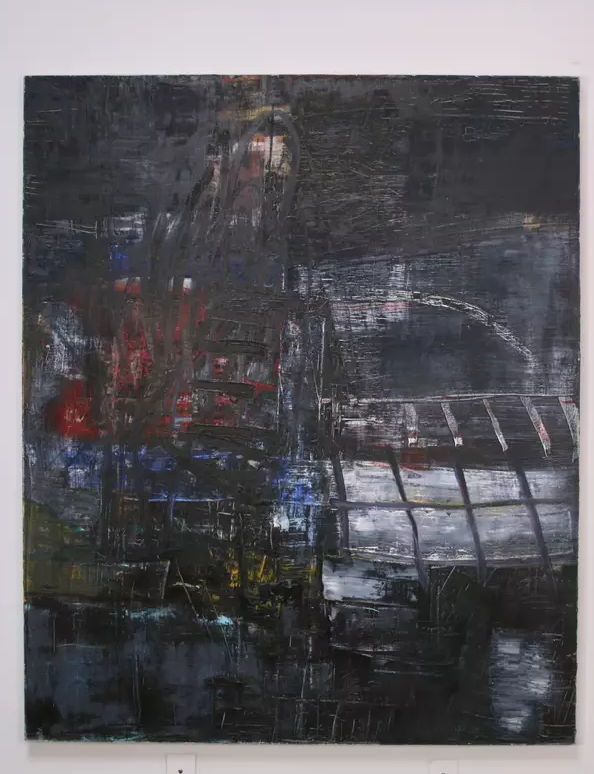
54″ x 48″ Oil on Canvas 2010
JC: “There’s less material on it. I did a lot of subtractive scrapping in. Which I think is something that’s unique about this piece. Maybe that was reflective of going back at the same kind of problem. Sort of that feeling of like hitting your head against the wall. With the lockdown and not knowing where the way out was, or where the end was; there’s a frustration inherent in that. Wrestling with everything going on and wrestling with the process of painting too. But this painting is different in that you can see that first layer. The yellow was how it started. A kind of pale yellow wash. Most of the paintings are worked to a level where you can’t really see the first layer in them anymore, so this painting is a little more transparent and less opaque. A little less heavy. So yeah, it’s potentially a different direction.”
We talked a little more about COVID and all the associated anxious feelings that most of us felt, particularly at the beginning.
JC: “I remember feeling like, it was this weird, mystery monster out there that you didn’t know. Especially early on. You didn’t really know anything about it,…. you might have it. You didn’t even know that ‘cause a lot of people were asymptomatic. It was such a mind-fuck, for lack of a better word. And so, I think it was like ‘how do I make anything constructive right now?’. I think there was a lot of rehashing of what was already there. “
As optimistic as this painting possibly is, there are still clear dark areas in it, including two dark slash marks at the head of this piece. Possible symbols of those anxious feelings of the COVID era. Jordan and I remembered grocery store experiences of empty bread aisles, cleaning supplies gone, no paper products at all to be found. Even a run on meat was happening at the beginning of this. Times none of us thought we’d experience.
Through all of that, one of the silver linings of Jordans experience was taking on full-time dad duty with his 2 year old son Grayson, as their daycare was shut down. Compared to some of his other friends who are parents, Jordan felt lucky that he didn’t have to deal with the difficulties of adapting kids in school to home learning via Zoom, a word very few of us associated with internet communication in early 2020 that has since become part our everyday vernacular.
We went on to talk about how Jordan titles his work.
JC: “Titles usually come later. I don’t start with a title and then chase after it. Part of what I like about abstract painting is the ability to simultaneously accumulate and consolidate a lot of different things into one space. A lot of the titles will be sort of double entendres, or tiles that can have a number of different meanings.”
Illustrating his point, Jordan motioned over to his painting “Stash”.
JC: “Part of this title was the idea of a pile painting similar to those Guston paintings.”
Great paintings Philip Guston did in throughout the 1970’s. Worth a look!
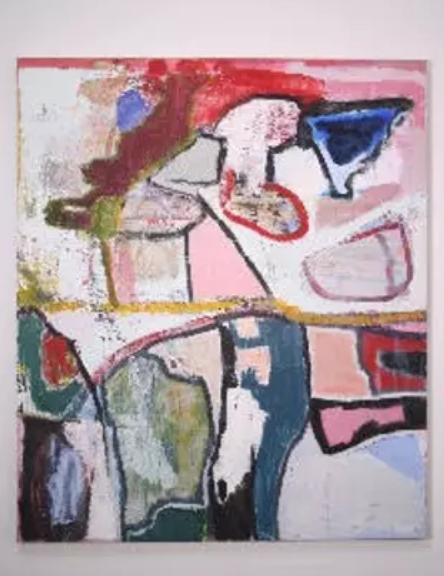
54″ X 46″ Oil on Canvas 2018
JC: “An accumulation of things and a sort of a density of mass, or density of things. And then the finishing move on this painting was this thing you’re not supposed to do. Which is through the middle of a painting.”
Jordan is referring to a thin horizontal yellow stripe through the middle of this painting.
JC: “I came to see that as a pencil thin mustache. So this plays with the whole idea of face finding in clouds and in paintings. Which is something that happens sometimes with abstract painting, and is a natural impulse. So it kind of has a double meaning where stash, like an accumulation of things, and then stache, sort of a tongue and cheek like…mustache on a painting.”
I was curious about this idea of accumulation that Jordan was describing and wondered if that was a working mode specific to “Stache”, or if it was part of his overall working method. We then went on to discuss another large painting of his titled “Pegasus.”
JC: “There’s a lot of similarity. At some point during the making of this one and laying in this pink structure, the idea of Pegasus, the winged horse came to mind. If you look, you can make out a winged form here, but it was never an overt decision like ‘from now on this painting is going to be about a Pegasus.’ It was just something that came out of the process of making it. So, you sort of reflect on this idea of this mythical creature. Warhol did a piece of the Mobil gas symbol, and I realized that this symbol was in my subconscious just from driving around. So there’s all these things that play into it, and it was something that arose out of the process of making it. “
We went on to talk about Jordans smaller works, which are his newest. The space in which accumulation and consolidation happen is much more reduced, and I wondered how Jordan dealt with that.
JC: “They develop more quickly. I generally use the same size tools I use for the large ones. So the ratio of tool size to surface is much different. I can cover a lot more ground more quickly, and make a lot more drastic revisions or changes on a small painting. So they can run through ideas a lot quicker. And if the large paintings relate to the body, the small paintings are head size, so I think that is the way they are entered and thought about.”
Color is an essential element to Jordans paintings. One painting that was particularly striking as you walked into the gallery was one titled “Bosom Buddy”. A massive cobalt blue, almost Rorschach test looking shape in the middle of the piece demands attention, and I was happy to stare on! And despite Jordans love of cobalt blue, he interestingly doesn’t think of himself as a colorist.
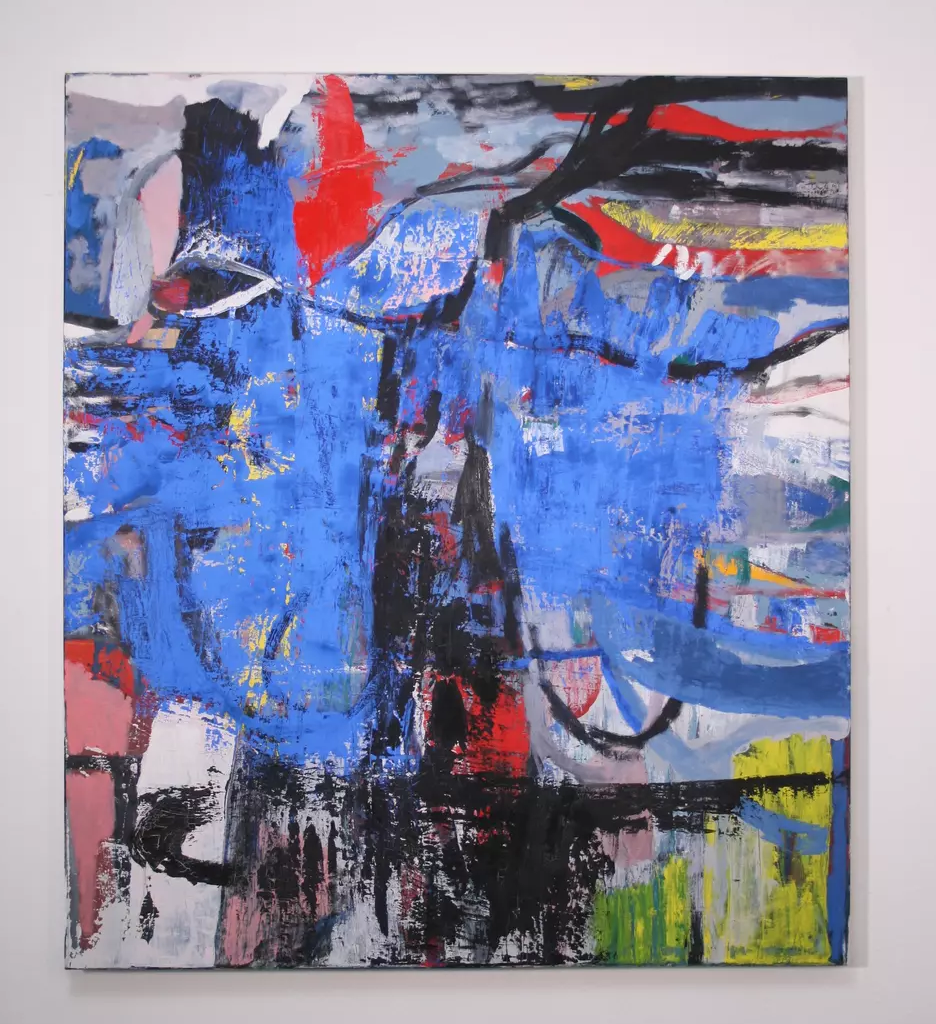
54″ x 48″ Oil on Canvas 2019
JC: “I’ve never been that much of a colorist, and wouldn’t call myself that. I generally tend to work with primaries and then I sort of explore outwards from there. I like the contrasts that those give, but there are certain pigment decisions that are made. I think there’s something that’s inherent in the material of a cobalt and how that blue looks and feels that you can’t mimic with a cheaper paint.”
Experienced artists like the two of us know that there are no substitutes for a color like cobalt blue, and as expensive as it is, the allure of making art with it sometimes just can’t be resisted.
As we wrapped up, Jordan talked a little about his day job as an art shipper and how that allows him to get up close and personal with a lot of incredible art. Just earlier that day he was packing up some amazing things.
JC: “Today I was packing up a Diebenkorn, and a Rauschenberg, and a Rosenquist. And you get those moments when the light comes through the window and you’re all alone with the work, and in some ways it’s way better than seeing it in a museum. And I think that stuff fuels my work too.”
JW: “Is that usually in people’s houses?”
JC: “Yeah, and you can get surprised. You can walk into a room and around the corner, there’s a Bonnard on the wall. And you’re like, ‘Ok, I didn’t know I was going to see that, and I didn’t know about that painting’, and you probably wouldn’t get to. Maybe they’d lend it at some point, but maybe not. So, yeah, that’s a nice perk.”
One of the best day jobs an artist can have!
What’s up next for Jordan? He and Micah are working on a possible high end retail sales channel where Jordans paintings will be on view in the gallery district on El Paseo in Palm Desert. Details are still being worked out, so keep an eye on the F+ Gallery Instagram page as well as Jordans Instagram page and his other social media outlets. If we’re all just about through the eye of the COVID storm, I’m hoping for a great party! Thanks guys!
https://www.fplusgallery.com/ https://jordanchristian.com/home.html
-Joel Woodard holds a BFA in Drawing and Painting from Laguna College of Art and Design, class of 2004, and an MFA in Studio Art/Contemporary Practices from California State University, Long Beach, class of 2012. He also is the Director of Operations and Head of Security at Laguna Art Museum.



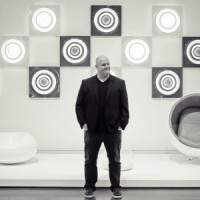
David M Lee
Posted at 22:01h, 12 AprilIt makes me very happy to see the arts opening up in Orange County.
Great paintings Jordan.
Great interview Joel.
Micah… I am glad to see that your space is open to the community.
Cheers,
DML